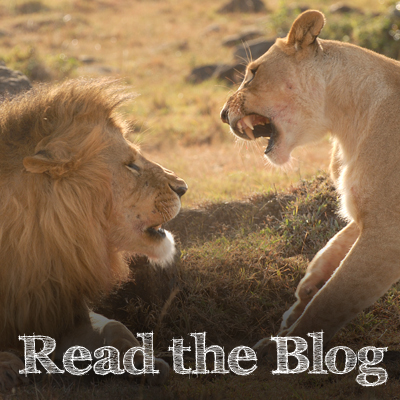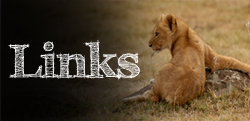How To Identify Lions
Why do we identify lions?
By identifying each lion, we can track individuals and thus identify pride home ranges and population trends. This allows us to apply effective conservation techniques.
How can lions be uniquely identified?
Each lion is identifiable from the whisker spots, which are found on each side of the face in rows. We use other unique characteristics too, such as manes in males, but only the whisker spots remain unchanged throughout a lion's life.
Using the Whisker Spot Pattern
We use two rows, the reference row and the identification spots:
- The reference row is the top complete row of whisker spots
- The identification spots form an incomplete row above the reference row. There may be up to 5 spots
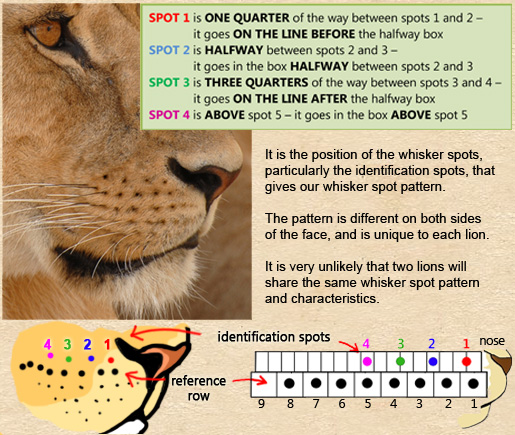
Manes
Manes come in all shapes and sizes. A male's mane is an important indicator of health and pride status, and is dependant upon both genetics and ecological factors.
Whilst the mane is useful for identifying males, it is important to remember that it can change dramatically with age, health and reproductive activity.
Mane sizes are categorized as follows:
- Small/'mohawk' mane = Crest of the head, chest and cheeks. Light in colour.
- Medium mane = Longer on the head but doesn't reach the ears. Fuller on the chest and cheeks, but not on the shoulder. Mostly brown.
- Large mane = Reaches or covers the ears, very long covering the chest, cheeks and across the shoulder. Brown and often black.
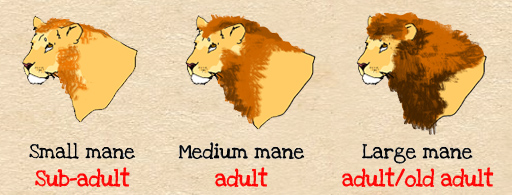
Examples of Manes
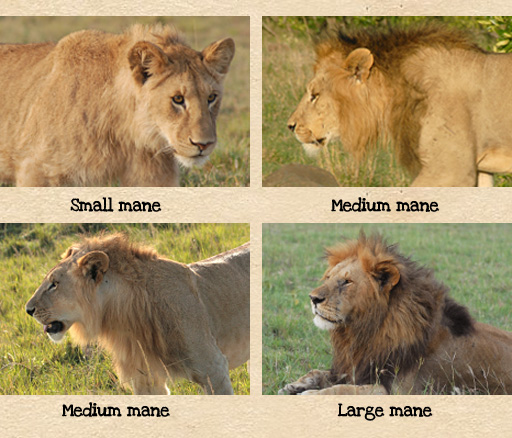
Noses
When a lion is born, it has a pink nose. As it ages, small, black spots appear. These grow in size and number until the nose is completely black, usually after 8 years.
Nose pigmentation can be highly variable, but is usually as follows:
- Pink nose = cubs, sub-adults and young adults
- Spotted nose = young adults to mid-adults
- Patchy nose (large spots) = mid-adults to old adults
- Black nose = old adults
Because the spots remain in the same place and only grow bigger, we can sometimes use a recent picture of our lion's nose to compare the pattern of spotting and thus help us identify it.
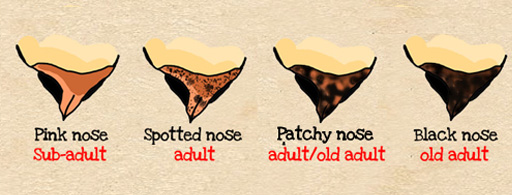
Using Other Characteristics
We can use several other characteristics for identification. These include:
- Age (click here to learn how to age a lion)
- Permanent scars (click for example)
- Broken or missing teeth (click for example)
- Unusual features:
short or missing tail tuft (click for example)
cut nose (click for example)
displaced whsiker spot (click for example)
Location and Pride Mates
Female lions will only associate with others in their pride, and have set home ranges. Because of this, the lions seen together with our lion in question and the location at which it was seen can give us a clue as to who it is. Males, however, tend to travel over larger distances and between prides, so this rule applies to females only.








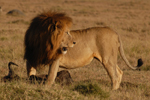 Large Manes
Large Manes 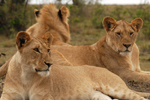 Serian's Locals
Serian's Locals 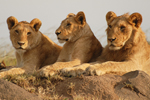 Sub Adults
Sub Adults 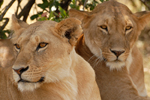 Female Lions
Female Lions 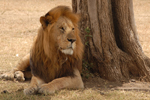 Male Lions
Male Lions 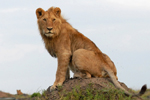 Browse All Lions
Browse All Lions 


